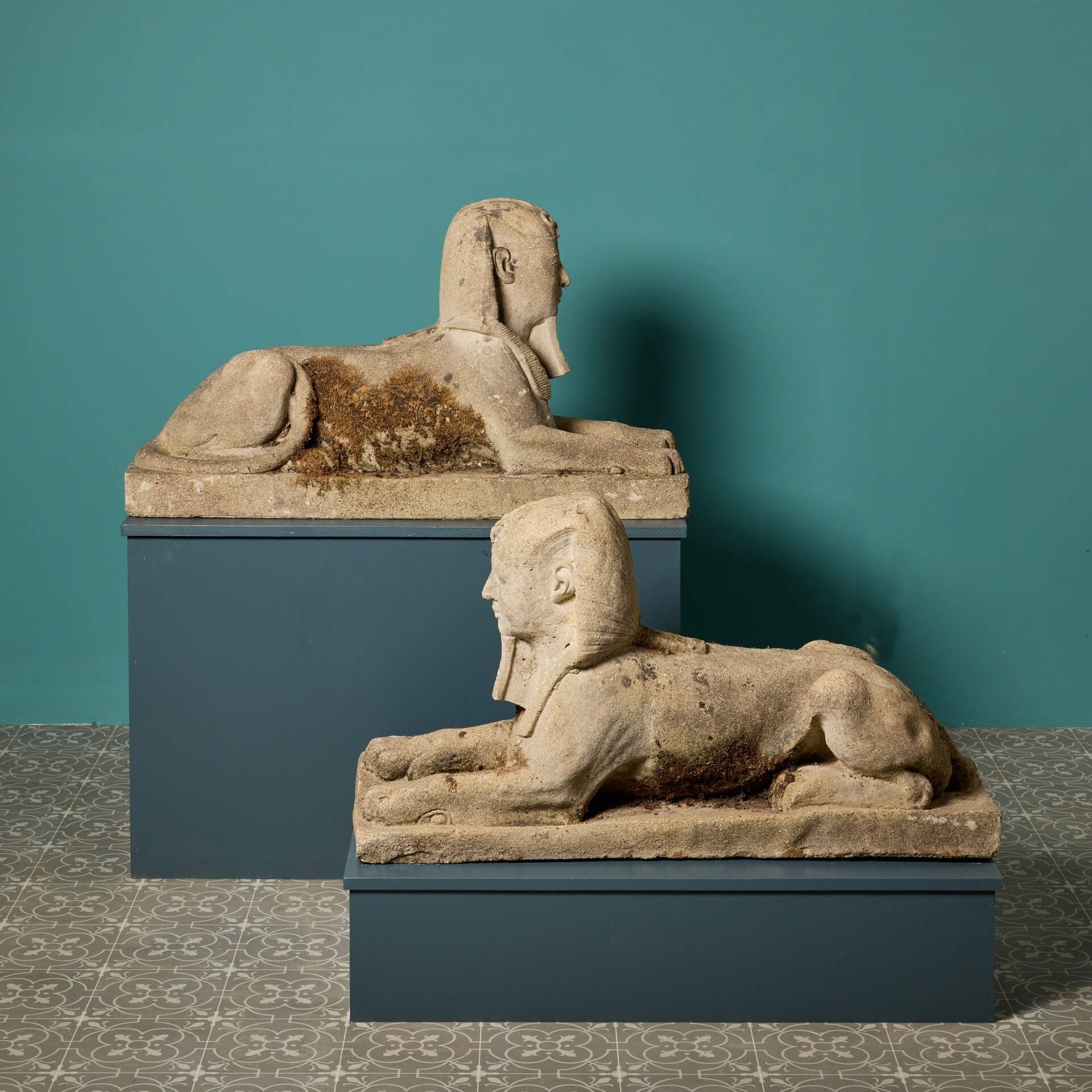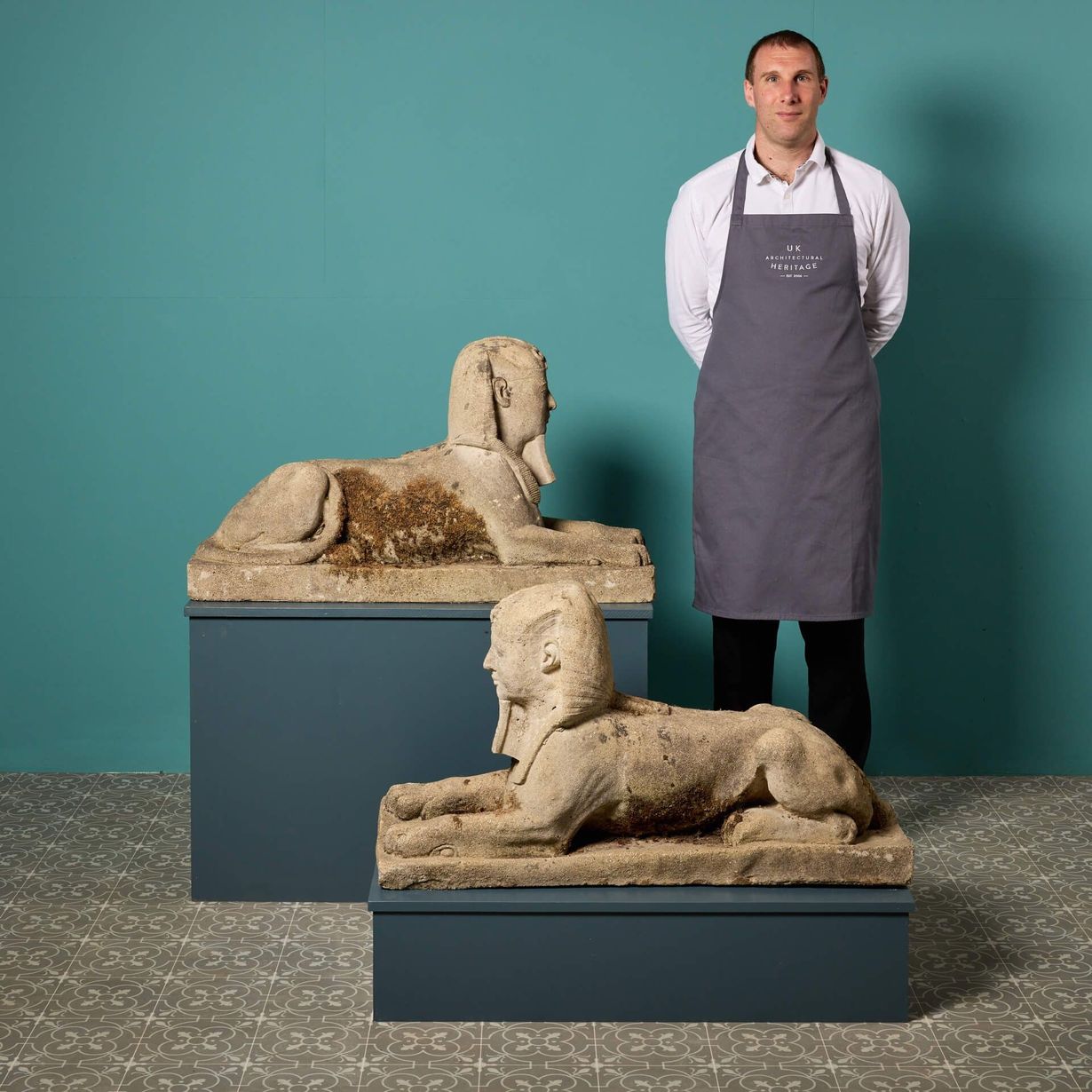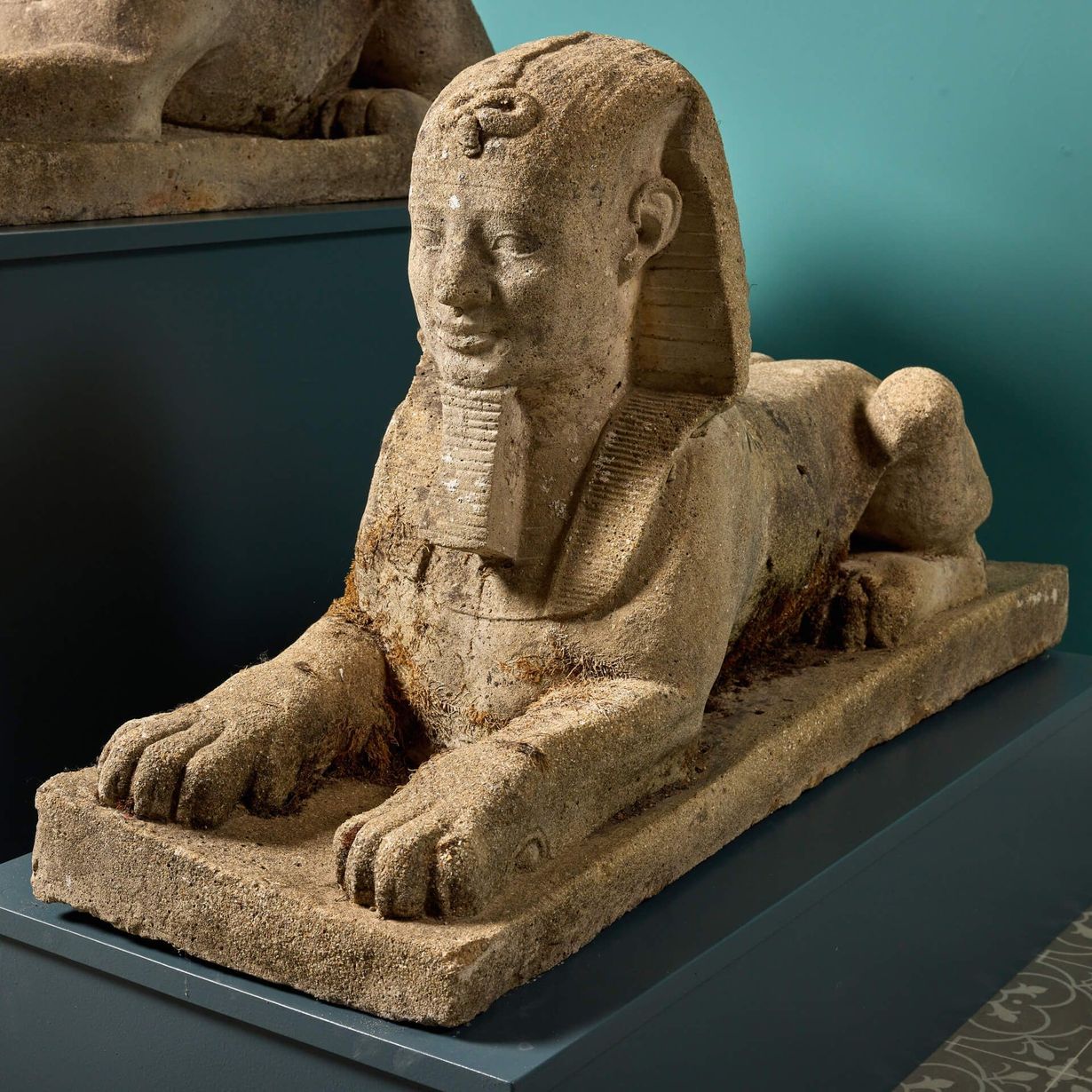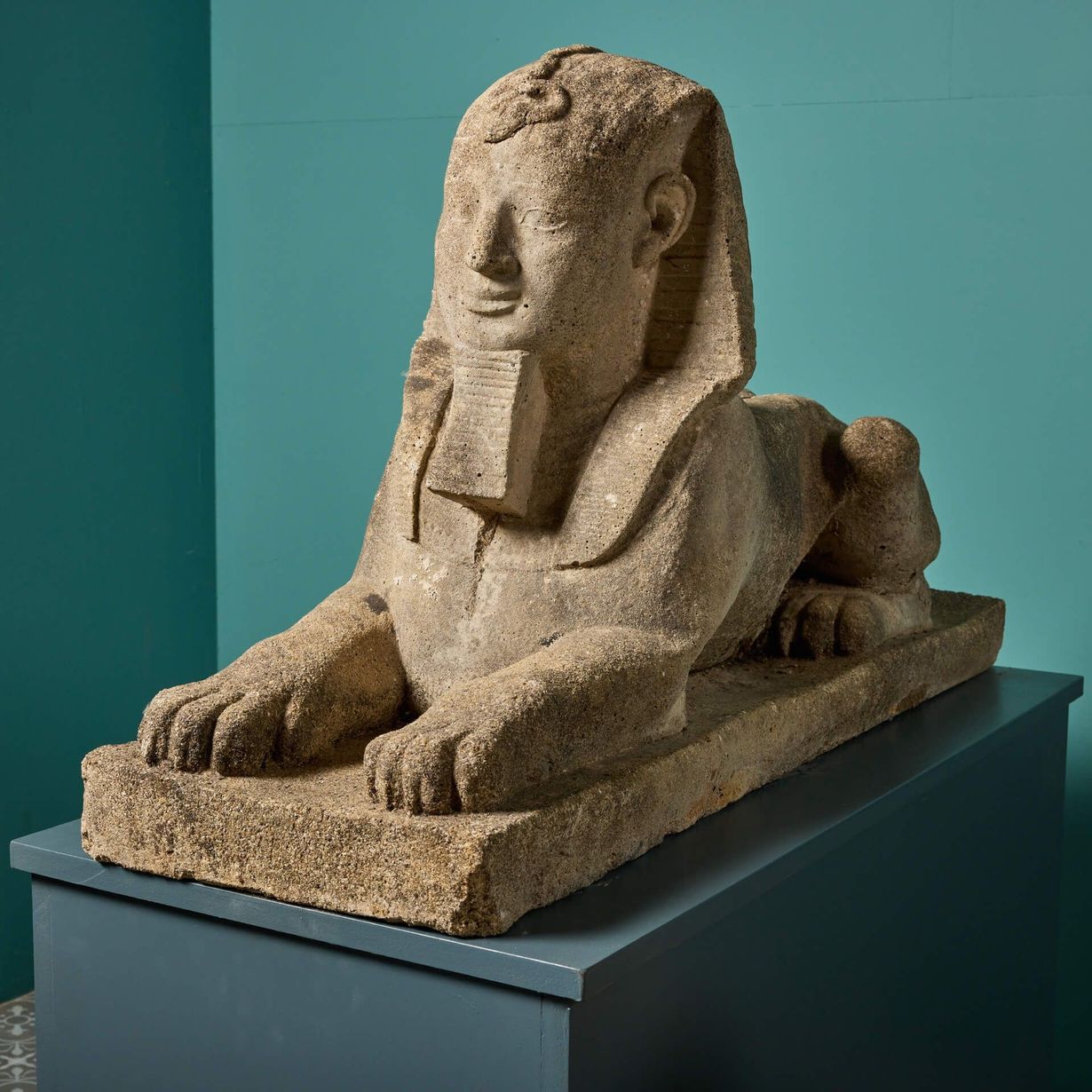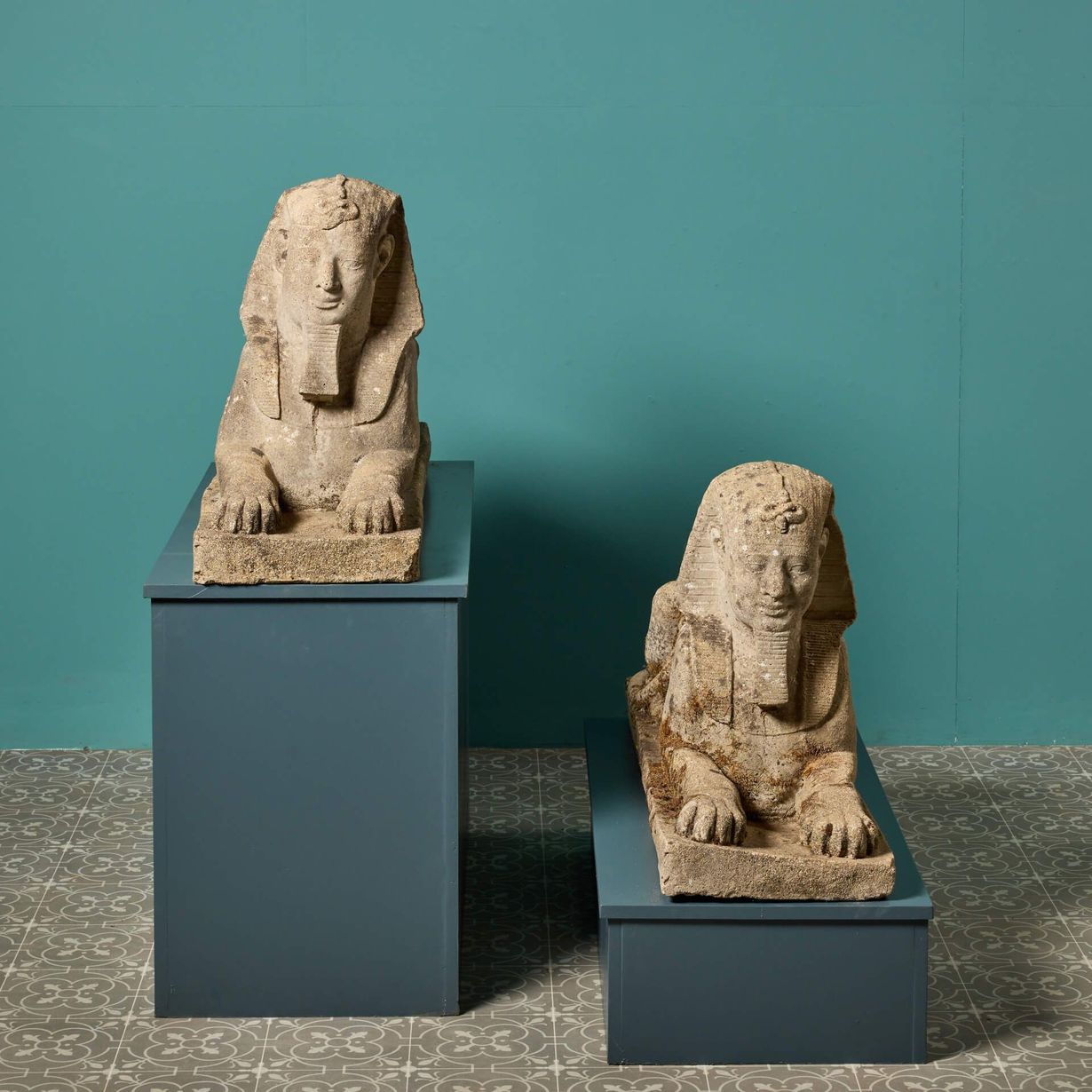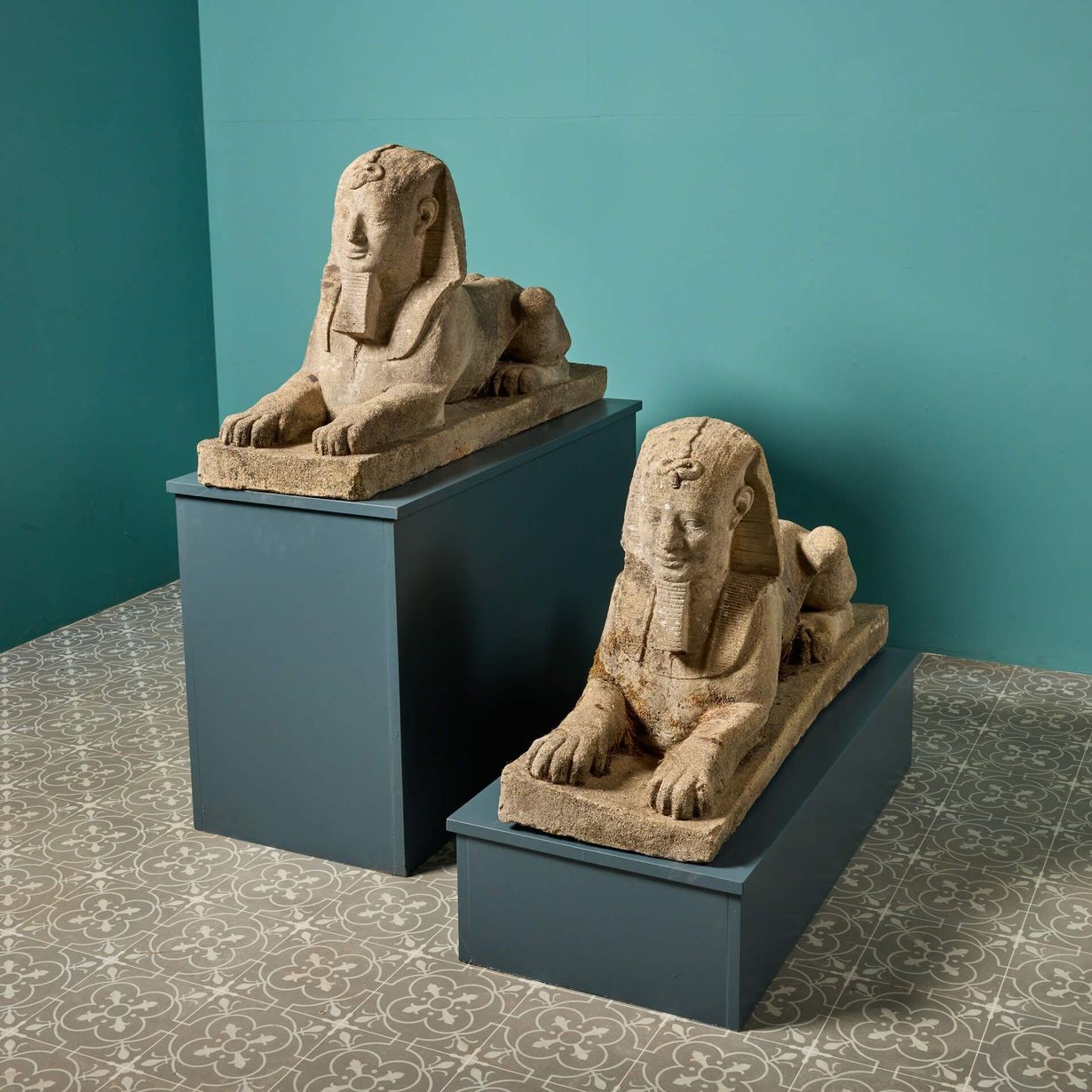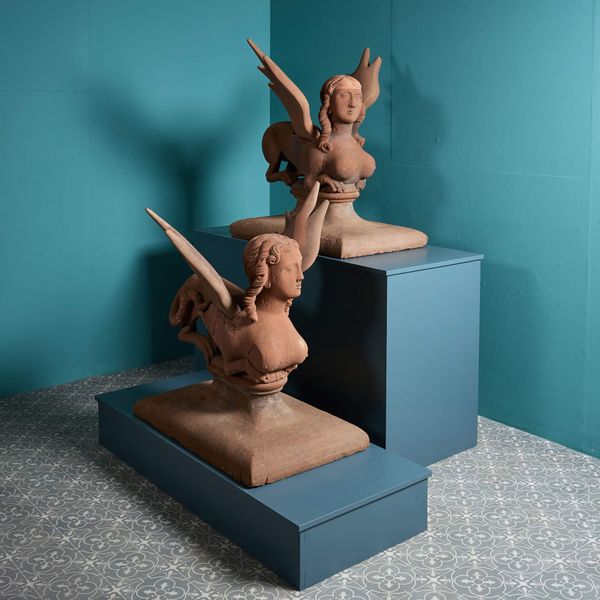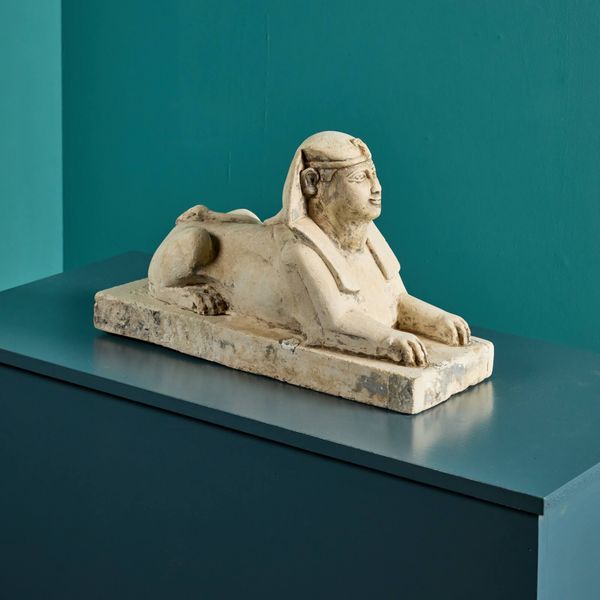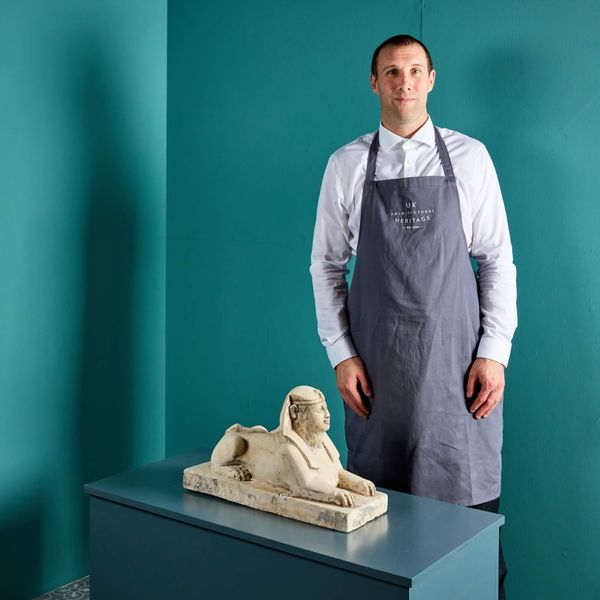About this piece
back to topPair of reclaimed Georgian style stone sphinx garden statues. Egyptian decor had a revival in the Georgian and Regency period, this gave statues like this stunning pair a new spot in the limelight.
These sphinx have stood the test of time with their strong features and mellow tones. This large scale pair would certainly take centre stage in the entrance or garden of any property, old and new.
Dating to circa 1930, these sphinx are a take on Cleopatra’s Needle, at the Thames Embankment, in London.
One of their more eye-catching features are the snakes that reside on the top of both heads. This snake symbol was named Uraeus, a tribute to the Egyptian snake goddess Wadjet, and it was used to denote royalty and divine authority.
The story of Cleopatra’s Needle
Cleopatra’s Needle, originally from Egypt, is mounted on a plinth and flanked by two sculpted Sphinxes, which were erected alongside the obelisk in 1878.
They were brought to London in 1877, after the Sultan of Egypt and Sudan presented the statue to the British Government, in 1819. This was in commemoration of Lord Nelson’s victory at the Battle of the Nile in 1798 and Sir Ralph Abercromby’s victory at the Battle of Alexandria in 1801.
A brass plaque, set within the stonework of the plinth supporting one of the two sphinx, commemorates the disrepair caused to the plinth from the first raid by German planes in London during the First World War.
It is one of three similar Ancient Egyptian obelisk, with the other two in Paris and New York.
Additional information
The overall dimensions are for each sphinx.
Overall weight for both sphinx 235kg.
